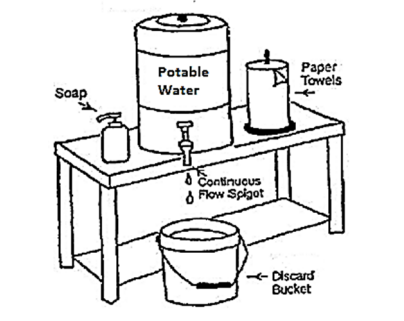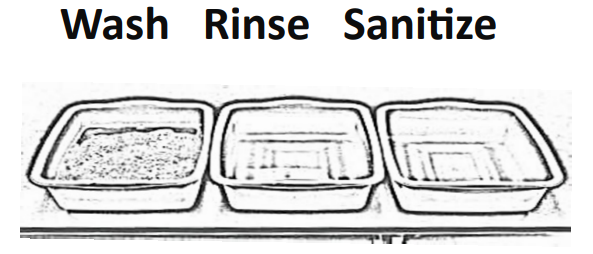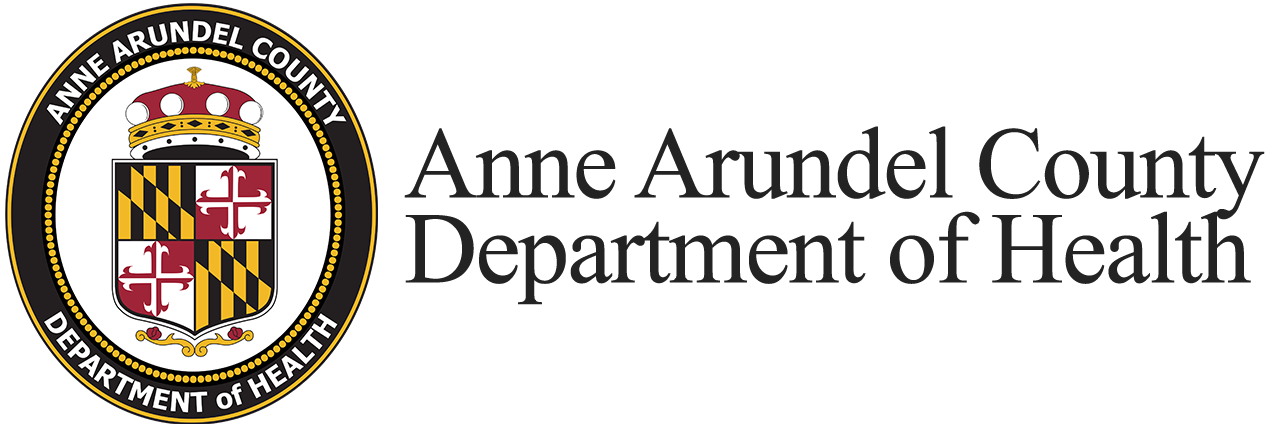A temporary food service facility is one operating for no more than 30 consecutive days at a fixed location in conjunction with an event such as a fair, carnival, public exhibition, construction project, recreational facility or similar gathering. A temporary food service facility permit application must be submitted to the Department of Health at least two weeks prior to the event.
Inspection Requirements
An inspection is required if a food service facility license is not issued at the time of application or prior to the start of the event. Your operation must be ready for inspection one hour prior to the start of the event. Food may not be served to the public unless a license is issued by the Department of Health. The below items must be provided before you will be issued a license to operate.
Food Sources
Food must be prepared on site at the temporary food service facility or at a licensed food service facility. Food may not be prepared at a private home. Ice must be obtained from an approved source.
Water Supply
There must be an adequate supply of water that is obtained from an approved source. A private well must be tested for bacteria and nitrate-nitrogen. Test results must be submitted to the Department of Health before a water supply may be placed in use. Only food grade (and not garden) hoses may be used as an approved water source.
Temporary Handwashing Station

Temporary Event Handwashing Station – Setup must include the following:
- A dispensing container that supplies clean water to the handwashing station;
- A 5-gallon bucket or other container capable of collecting wastewater from the temporary handwashing station; and
- Soap and paper towels.
A waste receptacle should be located nearby for disposal of paper towels.
Warewashing Station

Temporary Event Warewashing Station Setup must include three basins as follows:
- A wash basin filled with soapy water;
- A rinse basin filled with clean water;
- A sanitize basin filled with water and a sanitizing agent such as:
- Chlorine bleach at 50-100 ppm* or
- A quaternary ammonium compound (QAC) at the concentration designated by the manufacturer; and
- Test strips for testing the concentration of sanitizer.
Note: Each basin must be large enough to accommodate your largest utensil.
*Approximately ½ teaspoon of bleach per 1 gallon of water
Sewage Disposal
Wastewater from the ware washing station and the handwashing station must be disposed of in a manner acceptable to the Department of Health.
Temperature Control
All potentially hazardous foods must be maintained at the temperatures indicated in the attached Temperature Control chart. At least one calibrated metal-stemmed thermometer graduated in plus or minus 2°F is required. A thermometer measuring 0-220°F is recommended.
Food Protection and Food Storage
- Food, water and ice must be protected from contamination during storage, preparation, display, service and transport.
- Food preparation and food preparation equipment may not be located in areas accessible to the public.
- A combination of gloves and utensils are required for handling ready-to-eat foods. Bare hand contact of ready-to-eat food items is not permitted.
- Food must be protected from contamination and environmental hazards at all times. Food, including condiments, must be protected from contamination with the use of lids, covers, sneeze guards, screening, fans, tents or additional measures.
- Shellfish must be obtained from an approved source and shellfish tags must remain with the product until the product is used. Shellfish tags must be kept for 90 days to readily identify the source of the shellfish and be maintained in chronological order.
Disease Transmission and Prevention
- People who have boils, infected wounds or a communicable disease that can be transmitted from person-to-person must be restricted from any food preparation, food service or food handling at the event.
- Food contact surfaces must be kept clean and sanitary with the use of wiping cloths. Between uses, wiping cloths must be stored in a sanitizing solution:
- chlorine and water at a concentration of 50-100 ppm (parts per million) or at a ratio of one teaspoon of bleach per gallon of water; or
- a quaternary ammonium compound (QAC) at the concentration designated by the manufacturer.
Note: Test strips for testing the sanitizer concentration must be provided.
For more information, contact:
Anne Arundel County Department of Health
Bureau of Environmental Health
Food Protection Services
3 Harry S. Truman Parkway
Annapolis, MD 21401
410-222-7192
The services and facilities of the Anne Arundel County Department of Health are available to all without regard to race, color, religion, political affiliation or opinion, national origin, age, gender identity, sexual orientation or disability.
TEMPORARY EVENT TEMPERATURE CONTROL CHART
| Food Product | Prepared Internal Temperature | Hot Hold Temperature | Cold Hold and Cold Storage | Reheat to Internal Temperature |
| Poultry & Ground Poultry | 165°F | 135°F | 41°F | 165°F |
| Raw Animal Product Cooked in Microwave Oven | 165°F | 135°F | 41°F | 165°F |
| Stuffed Meats | 165°F | 135°F | 41°F | 165°F |
| Ground Meat Products (i.e., Pork Sausage) | 155°F | 135°F | 41°F | 165°F |
| Shell Eggs NOT for Immediate Service | 155°F | 135°F | 45°F | 165°F |
| Shell Eggs for Immediate Service | 145°F | 135°F | 45°F | 165°F |
| Pork | 145°F | 135°F | 41°F | 165°F |
| Beef | 145°F | 135°F | 41°F | 165°F |
| Whole Roasts(Beef, Corned Beef, Pork, Cured Pork, Ham) | 130°F held for 112 minutes | 130°F | 41°F | 165°F |
| Seafood | 145°F | 135°F | 41°F | 165°F |
| Live Shellfish | 145°F | 135°F | 45°F | 165°F |
| Ready-to-Eat Commercially Processed Food for Hot Holding | 135°F | 135°F | 41°F | 165F |
| Fruits and Vegetables for Hot Holding | 135°F | 135°F | N/A | 165°F |
POTENTIALLY HAZARDOUS FOODS
Note: If the event is a multiple day event and food will be cooled and reused on subsequent day(s):
- Food must be cooled from 135°F to 70°F within 2 hours; and
- Food must be cooled from 70°F to 41°F within an additional 4 hours.
Food must be rapidly reheated to an internal temperature of 165°F within 2 hours for hot holding for those food items that go through an initial heating and cool down process.

